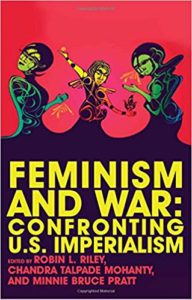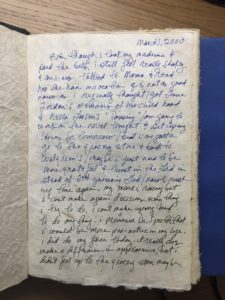Throughout my life, my understand and my self-identification of feminism has constantly shifted. There was a time when I thought identifying as just a feminist was a bold move and I didn’t even think about adding words to that identity. The first time that I began to feel like the label “feminist” couldn’t capture my identity was when I started exploring all of my different identities and I started learned how they interacted with each other. I would hear and learn about other feminists and realize that I not only couldn’t relate to them, but I also didn’t even want to associate with them. These feminists only shared one thing with me, my identity as a woman.
However, my identity as a woman is not the only important identity I hold. My Blackness, my identity as an Ethiopian immigrant, and my experiences as a Black American are all important to me. For most of my life, I felt like I had to pick one identity, which was difficult to deal with. However, learning more about the possibility of feminism as an all-encompassing identity made me realize that I could hold all of my identities.
If I could label myself, and get away with having an inextricably long label, I would identify as a Black, Ethiopian, Immigrant, Oromo Feminist. The order of the words prior to “feminism” is not significant, but I couldn’t represent myself without these words. I want to keep the word Black because my identity as a Black person in America has played a critical role in my understanding of race and influenced the way I experience my gender. I included Ethiopian because my cultural background and customs have also shaped my understanding of gender. I included immigrant because my gender has determined the way that I, along with other women in my family, experience being an immigrant. For example, my mom came to America two years after my dad because he was getting a Ph.D. and establishing a life for our family. In fact, most immigrant families I know are structured in a way that the father moves to the west to get an education while the wife follows years after with the kids. Lastly, I included the word Oromo, which is the name of the ethnic group I belong to. This group has suffered abuse, torture, and marginalization by the Ethiopian government and Oromo women have been subjected to gendered violence.
All of these components of my life are important to me and I don’t believe anyone is more important than the others. They have all helped me to understand what it means to be a feminist by giving me a racial and global context. I chose to use these words because they are very specific to my identity and I feel more comfortable using words that are specific to my identity to describe myself. For example, I don’t identify as an African feminist, because I only feel comfortable identifying with the Ethiopian and Oromo experience, not the African experience which is too vast.
As for the what terms I am planning on using to classify the radical women for my archival project, I am planning on using the term third world feminist. I believe the writings of Shange indicate that she identifies with the views of third world feminists, as I wrote about in my blog post A Daughter’s Geography and Third World Feminism. As for the other radical women, I will look to see how they themselves identify.








